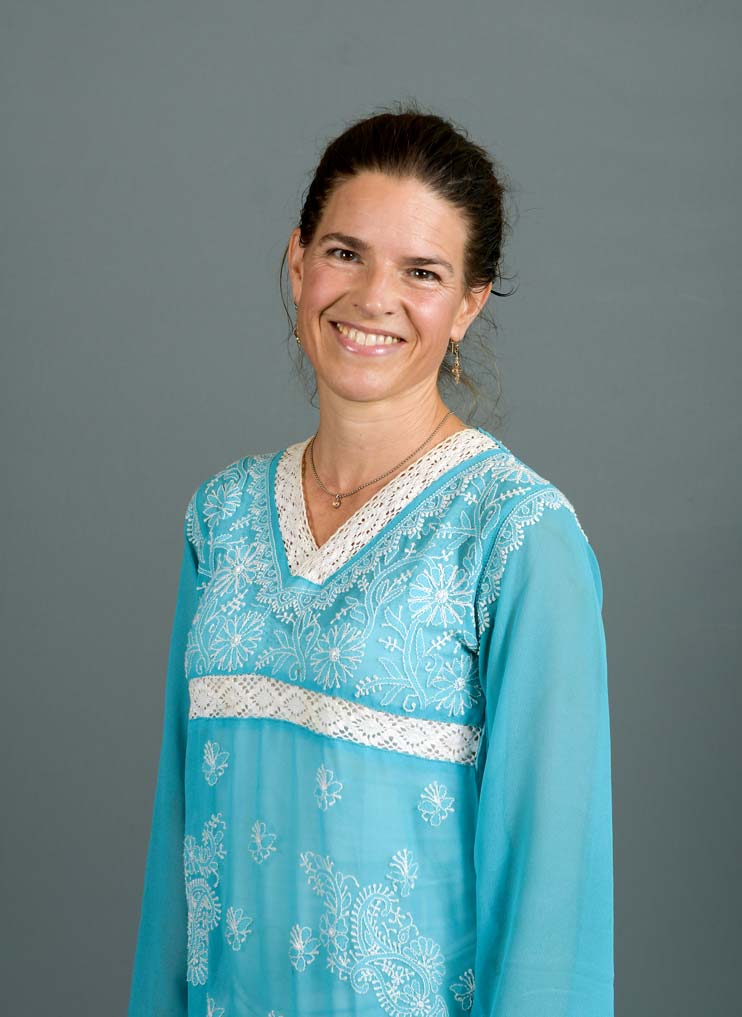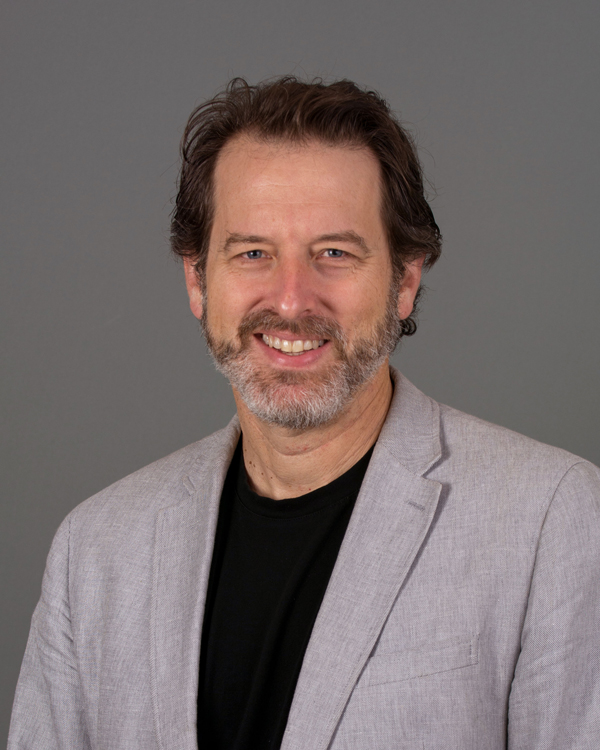Today’s blog is written by Malynn Utzinger, Director of Integrative Practices, and Tim Weitzel, ESI Architect.
There’s an old story about a traveler who happens upon a stonemason. “What are you doing?” the traveler asks. The stonemason says wearily, “Can’t you see I am cutting and laying down stone? My back is killing me, and I can’t wait to stop.” Down the road, the traveler encounters a second stonemason and asks him the same question, “What are you doing?” This stonemason, more energetically, replies. “I’m building a wall. I am blessed to have a profession that allows me to support my family.” Walking on, the traveler encounters a third stonemason doing the same work. This stonemason is beaming with life. When the traveler asks what he is doing, he spreads his arm wide and exclaims, “I am building a cathedral that will uplift lives for centuries to come!”

Imagine how different each of these stonecutters’ day-to-day experience was. Imagine the difference in the impact on others and, most likely, the quality of their work. How we choose to think about our life and its day-to-day, even moment-to-moment happenings, radically impacts our experience, our resilience in the face of challenge, the physical structure of our brains, our relationships, and the results we get in our endeavors. How we choose to think about the events we encounter literally makes the difference in whether we remain psychological children driven by fears, approval needs, and resentments or whether we become the most inspiring, self-actualized, psychologically mature version of our adult selves possible.
The good news: It is that simple. And the choice is yours.
The less-good news: It is simple, but not easy. And it takes a lifetime of practice.
In those moments of practice, however, the reward you extract from being more fully awake and choiceful will be worth it. Most people do not crave an easier life. They crave a rich and full experience of life, and that richness largely comes from intentionally choosing how we respond.
Matthieu Ricard, a French Tibetan Monk, wrote, “We spend so much time exercising, eating right, and pursuing this or that goal, and we spend so little time on what matters most, taking care of how our mind functions. This is the ultimate thing that determines the quality of our experience.”
This is very much our experience, demonstrated again and again in the leading research of our field.
Training for Green Brain Optimism
The first step in psychological maturity is training the mind to recognize and appropriately tend to the difficult (but sometimes necessary) fears created by our Red Brain. “Training the mind” is what we consider to be the essence of the spiritual path. This involves rewiring our evolutionarily inherited negativity bias, rewiring our brains to be less driven by our history and unexamined cultural imperatives, and rewiring our brains towards a bigger, more open, more inclusive, more fluid, and even more objective, fair, and realistic orientation. This incredible journey towards more abundant life and vitality—fraught with challenge and setback—begins with how we think about what happens. As our friend David Surrenda says, “How you choose to think about what happens is the most important decision you make.”
There are many ways to follow this path, including meditation, sound and/or movement therapies, Neuro-Linguistic Programing (NLP), cognitive-behavioral therapy (CBT), and more. One very simple technique from the CBT tradition is called Self-Talk. Self-Talk is the inner conversations we have about what happens in our lives moment-to-moment.
There are four basic parts to effective self-talk:
- Stop telling yourself negative stories about another person’s bad character and/or their bad intentions towards you.
- Stop imaginings centered around self-pity, powerlessness, and/or that the world is against you.
- Start rewriting your inner stories, being as objective and realistic as possible. (Your outer stories will follow.)
- Start using language that sparks thinking in the direction that you want your brain to grow.
For example, just yesterday I am driving in modest traffic, and I get very rudely cut-off. My immediate thinking reaction is, “What a jerk! What a self-absorbed, narcissistic %$#@*@%! Why do we treat each other this way? It’s so inconsiderate!” (Can you pick out parts one and two from the list above?) My blood pressure skyrockets, my stomach turns acidic, my mood goes bad, and so on. I ruminate the next several moments on how unfair life is, letting my brain spiral from traffic all the way to COVID-19. Then I remember my training and change the way I choose to think about it. “Maybe he was under a lot of time pressure to get some place—been there, done that. Or maybe he literally considers his needs and his time as more important than everyone else’s. In either case, that’s a tough place to be in—too bad for him (said in a sincerely compassionate way).” Hopefully, parts three and four are obvious. Immediately my blood pressure begins to drop; I feel calmer, more open, even more understanding, and the incident recedes into my unconscious and stops its negative impact on my experience.
This is a very simple example, but either way we choose to think about such moments impacts the quality of our current and future lives as well as on our general effectiveness. We are always either reinforcing our historical and current brain wiring, or we are rewiring towards a more optimistic Green Brain. Researchers call this Neurovisceral Integration Across a Continuum of Time (NIACT), and it simply means that our moment-to-moment choices engage our nervous system, specifically the vagus nerve, in ways that not only change the moment, they influence our psychological growth and our capacities to engage and even to age healthfully across the entirety of our lifespan.
Our challenge to you for this month is to find an inner story you can change. You likely won’t have to look hard for a story that generates more inner judgement and turmoil than good. A small, seemingly harmless story (perhaps about the guy who cut you off in traffic) is sometimes the very best place to start. And then see if you can engage the four steps above to stop the negative spinnings, look for objective truths to support a new story, and then move your language in the direction of desired growth. You might go from driving with a bunch of jerks on the highway to a story that goes, “We are all under a lot of pressure, and I choose to spend my driving time acknowledging the complexity of our lives and wishing people well…or focusing on an interesting story on NPR. I choose to grow in kindness and wisdom.”
Next month, we will begin with a next level story . . .one that demonstrates the outer impact that occurred when one person changed his inner story and approach. Then we will build on this to show you how to cultivate what we call “absorptive armor,” which will empower you to handle just about any situation non-reactively.
This blog is part of an ongoing series on Emotional and Social Intelligence.
Explore the previous installments of the series:

As a Family Medicine physician and Director of Integrative Practices for Promega, Malynn thinks of herself as one who stands with a foot on either side of the chasms we humans encounter in life, helping us stitch together our worlds, our words, and our ways of being with each other. At Promega, her work in ESI has focused on helping people begin with self-understanding and move toward better understanding of others, ultimately supporting the roots and branches of a vibrant work community in which people feel belonging and a high sense of contribution. Malynn has worked in Family Medicine, Integrative Medicine, and Preventive Oncology at the UW, as the Director of Women’s Health for the Chopra Center in San Diego, as a consultant in integrative medicine and emotional intelligence for GHC and Eileen Fisher in NYC, and in research at Planetree and the Preventive Medicine Research Institute of San Francisco. She now lives in Madison, WI with her husband and son.

Tim is Promega’s ESI Architect, and he has spent his entire 30+ year career in Cultural Development Consulting, Executive Coaching, Executive Assessment, and Leadership development. From the beginning, he has stressed authenticity, courage, compassion and connection both in his approach with clients as well as being the foundation for excellent and sustainable leadership. He works with his clients using a variety of tools such as Depth Psychology, Day-in-the-Life Simulation Assessment, 360 Feedback, Personality Inventories and more to identify strengths and development gaps that create focused organizational change and/or learning goals. Tim has coached people at all levels and consulted in many top companies including Promega, Marriott, Walmart, McKesson, Lockheed Martin, Schneider National, Wisconsin Gas Company, Raytheon, Fiserv, Adventist Health, Pacific Gas & Electric, Trek Bicycle, John Deere Credit, General Motors, and many more top-tier organizations as well as numerous smaller regional and local businesses.
For more information on how Promega supports employee wellbeing using the tools of Emotional and Social Intelligence, visit our People Care page.
Latest posts by Promega (see all)
- Immune Surveillance Meets Innovation: The Critical Need for dsRNA Detection - April 22, 2025
- Beyond Ozempic: The New Frontier of Obesity Research - April 18, 2025
- One Health and H5N1: Promega’s Commitment to Holistic Solutions - April 8, 2025

One thoughtful comment